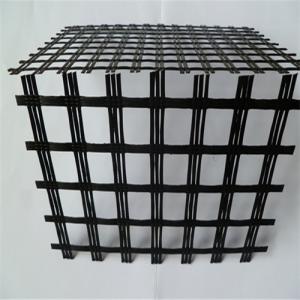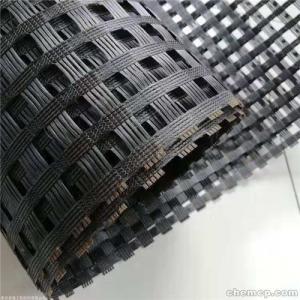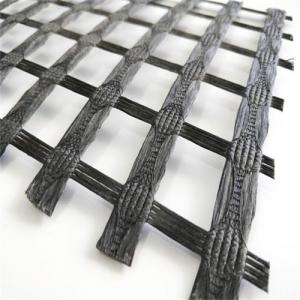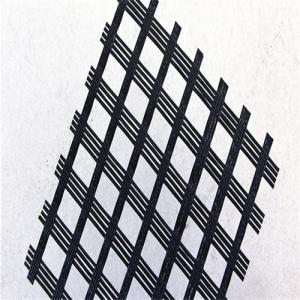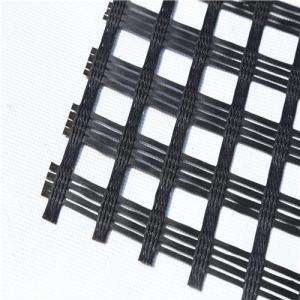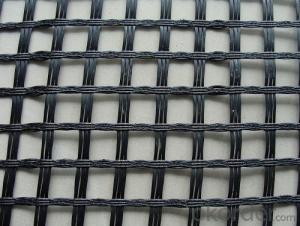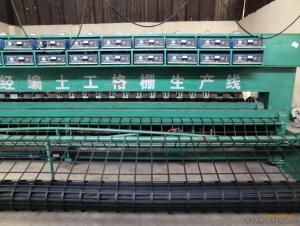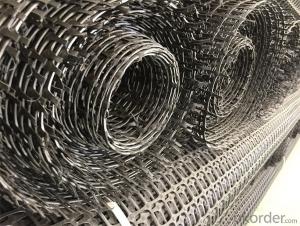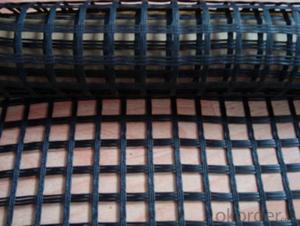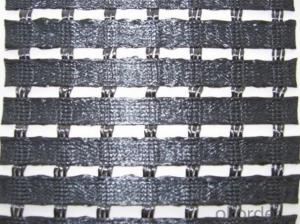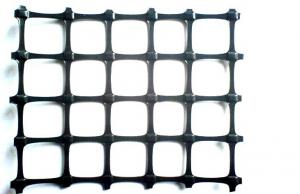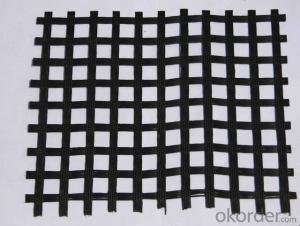Fiberglass Geogrid for Road Reforcement Construstion
- Loading Port:
- Tianjin
- Payment Terms:
- TT or LC
- Min Order Qty:
- 500 m²
- Supply Capability:
- 100000 m²/month
OKorder Service Pledge
OKorder Financial Service
You Might Also Like
Fiberglass Geogrid Description
Fiberglass Geogrid is a kind of planar mesh using alkali-free fiberglass yarn as base body and then coated with high quality modified asphalt. It is warp knitted with oriental structure which gives fully play of yarn strength and improves.
Its mechanical property. It is coated with asphalt making full protection of the fiberglass matrix and greatly improving its wear and shear resistance.
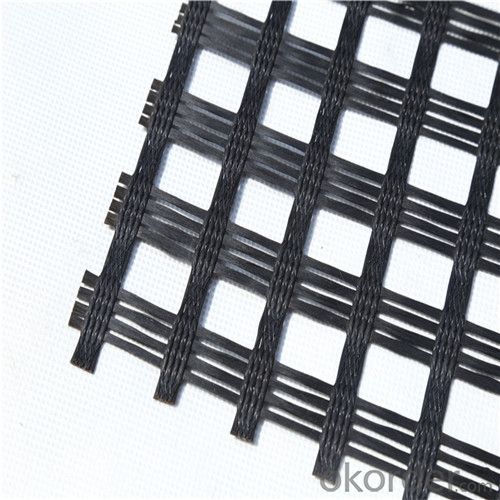
Fiberglass Geogrid Specification
Tensile Strength: 25-25KN, 30-30KN, 50-50KN, 80-80KN, 100-100KN, 120-120KN,
Roll Size: 3.95x100m, as request,
Fiberglass Geogrid Property:
1) High strength, low elongation;
2) Heat-resistant, high modulus.
3) Light weight, good flexibility.
4) Anti-erosion, long life time.
Fiberglass Geogrid Application
1) Roadbed reinforcement, prevent road surface crack.
2) Road reconstruction
3) Soft soil reinforcement, improve road whole bearing capacity and prevent crack.
FAQ
1. How about the delivery time?
Lead time since receipt of 30% T/T deposit payment: 3 weeks.
2. What kind of payments does jenor support?
T/T, L/C, Cash are accepted.
3. What's are the MOQ?
We can according to your condition to set the MOQ.
And we can provide you samples for quality inspection.
4. Do you charge for the samples?
Accordeing to our company policy, the samples are freee, we only charge the freight fee. And we will return the freight fee If you set the order .
5. Can you produce the product according to customers' requirements ?
Sure, we are professional manufacturer, OEM and ODM are both welcome.
6. Can you tell me your main customers?
That's our customers' privacy, we should protect their information. At the same time, please rest assured that your information is also safe here.
- Q:Are geogrids resistant to hydrostatic pressure?
- Yes, geogrids are resistant to hydrostatic pressure. They are designed to provide structural support and reinforcement to soil, helping to distribute and reduce the pressure exerted by water or other fluids.
- Q:Can geogrids be used in retaining walls for industrial facilities?
- Yes, geogrids can be used in retaining walls for industrial facilities. Geogrids are commonly used in retaining walls to increase their stability by providing soil reinforcement. They help distribute the forces exerted by the retained soil, making them suitable for use in retaining walls for industrial facilities where there may be higher loads and potentially unstable soil conditions.
- Q:How do geogrids help in reducing the risk of soil erosion?
- Geogrids help in reducing the risk of soil erosion by providing reinforcement and stabilization to the soil. They are typically made of high-strength materials like polyester or polypropylene, which are resistant to degradation and can withstand heavy loads. When placed in soil, geogrids create a network of interconnected cells that increase the soil's resistance to erosion caused by water flow or wind. This reinforcement prevents the soil particles from being displaced, maintaining the integrity of the slope or embankment. Geogrids also improve soil drainage, allowing excess water to pass through and reducing the likelihood of erosion. Overall, geogrids act as a physical barrier against erosion forces, enhancing the stability and longevity of soil structures.
- Q:What is the minimum net size of geogrid mesh center?
- Are there any specific requirements?
- Q:Can geogrids be used in subgrade improvement?
- Yes, geogrids can be used in subgrade improvement. Geogrids are commonly used to reinforce weak or unstable soil in subgrade applications. They provide additional strength and stability to the soil, allowing for better load distribution and reducing settlement.
- Q:The difference between two way steel plastic grille and one way steel plastic grille
- Bi directional steel plastic geogrid is both vertical and horizontal tension requirements, have to do pull test
- Q:What are the different installation techniques for geogrids?
- There are several different installation techniques for geogrids, including direct placement, overlay, and interlocking. Direct placement involves laying the geogrid directly on the prepared subgrade and then covering it with the desired fill material. Overlay technique involves placing the geogrid on top of an existing surface, such as an old asphalt pavement, and then adding a new layer of fill material. Interlocking technique involves connecting multiple geogrid panels together to form a continuous reinforcement layer before covering it with fill material. These installation techniques can vary depending on the specific project requirements and the type of geogrid being used.
- Q:How do geogrids improve the performance of geosynthetic-reinforced foundations?
- Geogrids improve the performance of geosynthetic-reinforced foundations by providing enhanced soil stabilization and reinforcement. They distribute and transfer loads more efficiently, reducing settlement and improving overall stability. Geogrids also increase the bearing capacity of the foundation, allowing for the construction of structures on weak or unstable soils.
- Q:Are geogrids suitable for use in high water table areas?
- Yes, geogrids are suitable for use in high water table areas. Geogrids are designed to reinforce soil and provide stability, making them a suitable solution for areas with high water tables where soil erosion and instability can be common. Their high tensile strength and ability to distribute loads make them effective in preventing soil movement and maintaining long-term stability in such areas.
- Q:How do geogrids enhance the performance of flexible retaining structures?
- Geogrids enhance the performance of flexible retaining structures by providing reinforcement and stability. They increase the strength and load-bearing capacity of the soil, preventing excessive movement and deformation. Geogrids also distribute the applied forces more uniformly, reducing the risk of localized failure. Additionally, they improve the overall durability and longevity of the retaining structure by mitigating the effects of soil erosion and settling.
1. Manufacturer Overview |
|
|---|---|
| Location | |
| Year Established | |
| Annual Output Value | |
| Main Markets | |
| Company Certifications | |
2. Manufacturer Certificates |
|
|---|---|
| a) Certification Name | |
| Range | |
| Reference | |
| Validity Period | |
3. Manufacturer Capability |
|
|---|---|
| a)Trade Capacity | |
| Nearest Port | |
| Export Percentage | |
| No.of Employees in Trade Department | |
| Language Spoken: | |
| b)Factory Information | |
| Factory Size: | |
| No. of Production Lines | |
| Contract Manufacturing | |
| Product Price Range | |
Send your message to us
Fiberglass Geogrid for Road Reforcement Construstion
- Loading Port:
- Tianjin
- Payment Terms:
- TT or LC
- Min Order Qty:
- 500 m²
- Supply Capability:
- 100000 m²/month
OKorder Service Pledge
OKorder Financial Service
Similar products
New products
Hot products
Hot Searches
Related keywords
